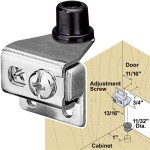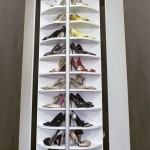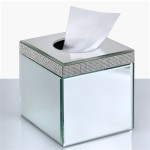How to Make Faux Antique Mirror
Creating a faux antique mirror offers a cost-effective way to achieve the aged, elegant look of genuine antique glass without the expense or difficulty of sourcing original pieces. This process involves applying various solutions to a new mirror to mimic the effects of time and wear, resulting in a piece that adds character and vintage charm to any space.
Several methods exist for creating a faux antique mirror, each offering a slightly different aesthetic. These methods range from applying etching creams to layering paints and glazes. Choosing the right method depends on the desired level of antiquing, the available resources, and the overall design aesthetic.
Before beginning any antiquing process, the mirror surface must be thoroughly cleaned. This ensures even application of the antiquing solutions and prevents imperfections in the final finish. Cleaning should involve a glass cleaner specifically designed for mirrors and a lint-free cloth to avoid leaving streaks or residue. For stubborn grime or adhesive residue, a razor blade scraper can be carefully used to remove debris without scratching the mirror.
One popular antiquing method utilizes etching cream. Etching cream contains chemicals that react with the mirror's surface, creating a frosted or textured appearance. This method replicates the natural wear and clouding seen in genuine antique mirrors. Before applying the etching cream, the areas of the mirror that are not to be etched should be masked off using painter's tape or a similar protective covering. The etching cream is then applied according to the manufacturer's instructions, typically involving a specific application time and rinsing process. After rinsing, the masked areas are revealed, leaving a clear contrast between the etched and untouched sections of the mirror.
Another technique involves layering various paints and glazes to create a layered, aged effect. This method allows for greater control over the final appearance, offering flexibility in color and texture. Typically, a base coat of dark paint, such as black or dark brown, is applied to the mirror. Once dry, a lighter, contrasting paint color is applied over the base coat. Before the top coat dries completely, a damp cloth or a specialized glazing tool is used to remove sections of the top coat, revealing the darker base coat underneath. This creates the illusion of worn areas and adds depth to the finish. This layering and revealing process can be repeated with multiple colors and glazes to create a more complex and nuanced antique effect.
A variation of the paint layering technique involves using a spray bottle filled with a mixture of water and vinegar. After applying a base coat and a top coat of paint, the vinegar-water solution is sprayed onto the still-wet top coat. The acidic nature of the vinegar reacts with the paint, causing it to crackle and create a distressed appearance. This method offers a more organic and unpredictable result compared to manual distressing techniques.
Mirroring solutions, specifically designed to create a mirrored finish on various surfaces, can also be used to create an antique effect. These solutions, often containing silver nitrate or other metallic compounds, react with the glass to create a reflective surface. By applying the mirroring solution unevenly or in multiple layers, one can mimic the uneven reflectivity and aged patina found in genuine antique mirrors. It's important to follow the manufacturer's instructions carefully when working with mirroring solutions, as they often contain chemicals that require proper handling and ventilation.
Beyond these primary techniques, various other materials and methods can enhance the antique look. Specialty antiquing mediums, available from art supply stores, can be mixed with paints or glazes to create specific effects. Crackle mediums create a network of fine cracks in the paint layer, mimicking aged varnish. Bitumen, a dark, asphalt-based substance, can be applied sparingly to add depth and shadows, giving the mirror a more authentically aged appearance. These specialty products offer further possibilities for customization and control over the final aesthetic.
Protecting the finished faux antique mirror is crucial for preserving its appearance and longevity. A clear sealant, specifically designed for use on glass and mirrored surfaces, should be applied after the antiquing process is complete and the paints or other mediums are thoroughly dry. The sealant protects the finish from scratches, moisture, and other environmental factors that could degrade the antique effect over time. Different sealants offer varying levels of sheen, from matte to glossy, allowing further customization of the final appearance.
Successfully creating a faux antique mirror requires patience, attention to detail, and a willingness to experiment with different techniques and materials. The rewards, however, are significant, offering a unique and personalized piece that adds vintage character and elegance to any decor.

How To Antique A Mirror Tutorial Jenna Sue Design

How To Antique A Mirror Tutorial Jenna Sue Design

Diy Antique Mirror Easy To Do And Looks Authentic My Creative Days

How To Antique A Mirror Easy Diy Tutorial

How To Antique A Mirror Tutorial Jenna Sue Design

How To Antique A Mirror Easy No Scratching The Navage Patch

How To Antique A Mirror From The Front With Paint Average But Inspired

How To Antique A Mirror 9 Fast Diys Shelterness

How To Create A Faux Antique Mirror From Picture Frame Jennifer Rizzo

Diy Mercury Glass Gilded Mirror Made From Old Photo Frames








